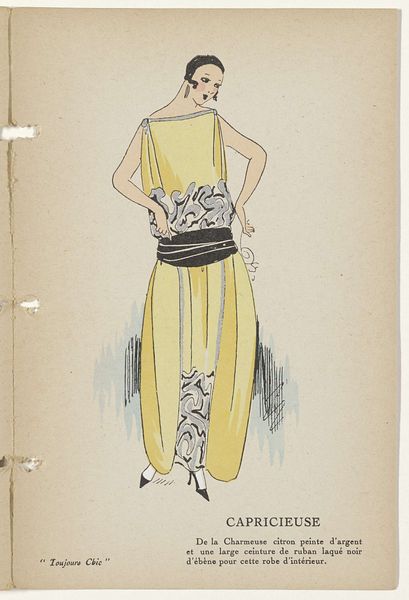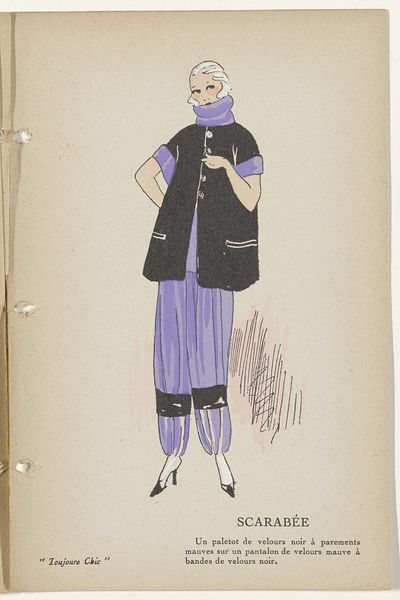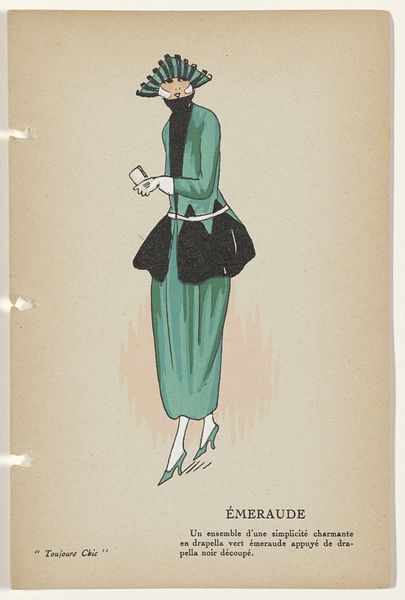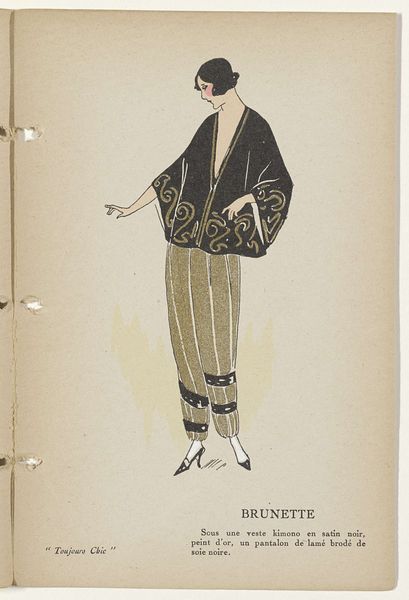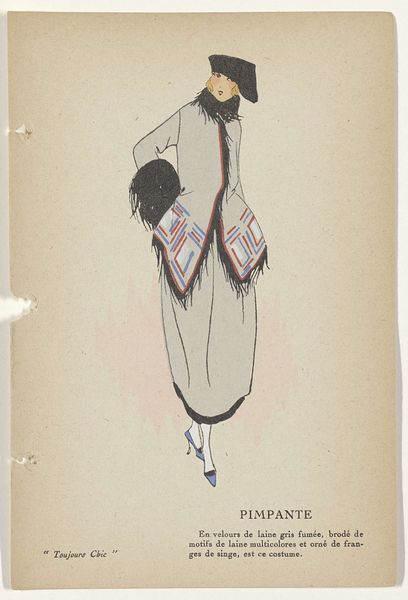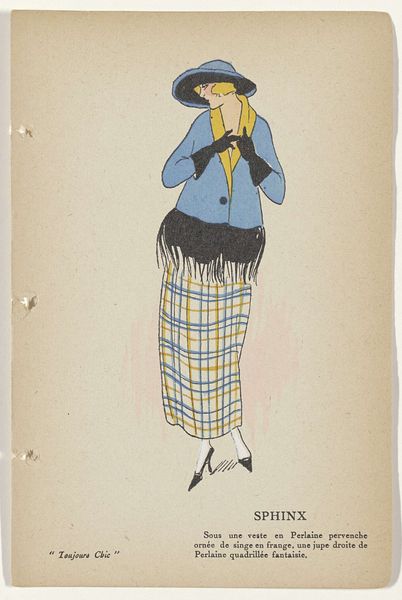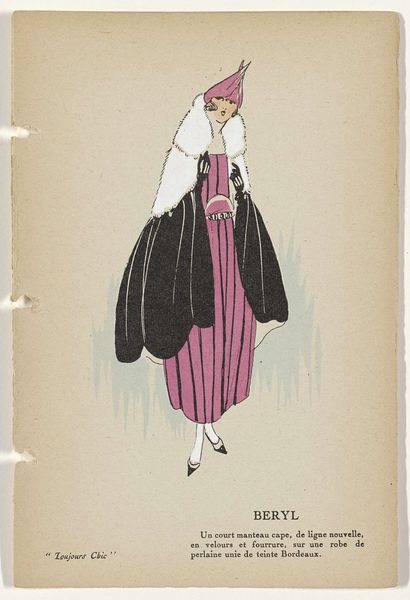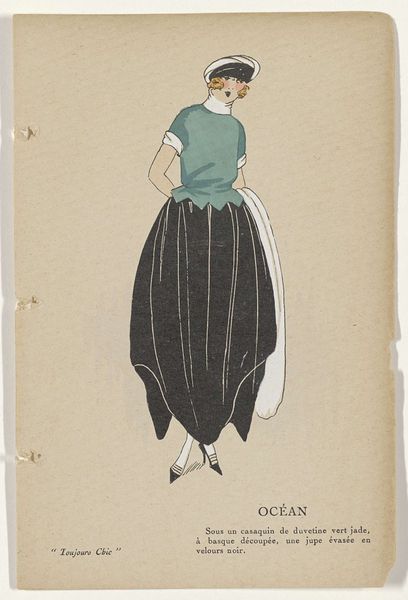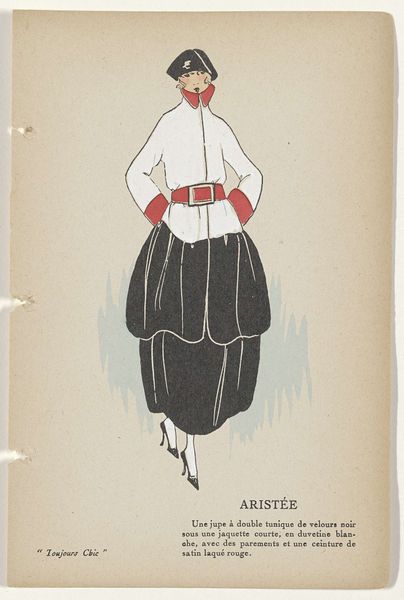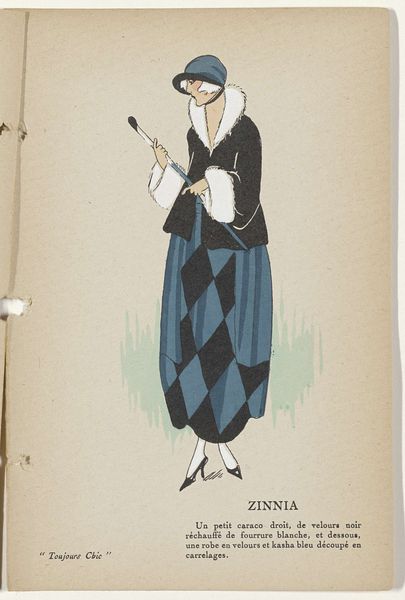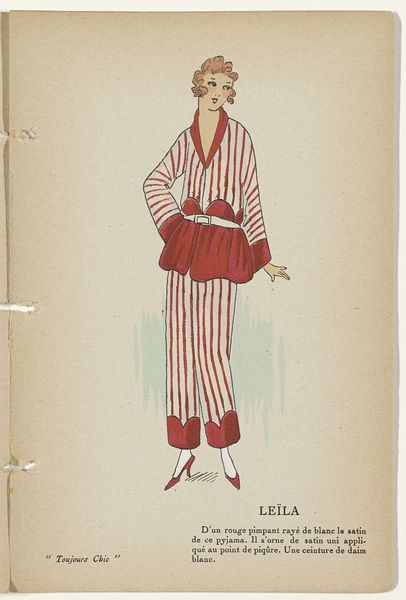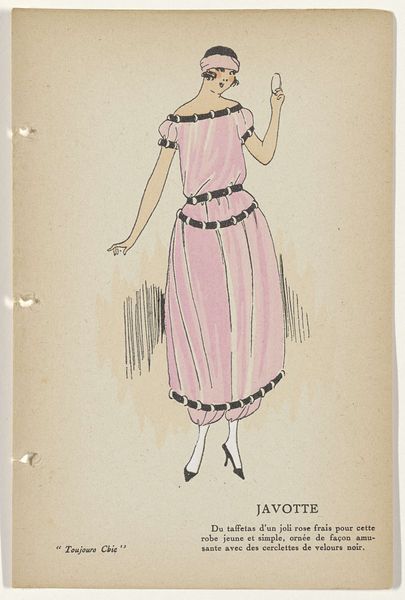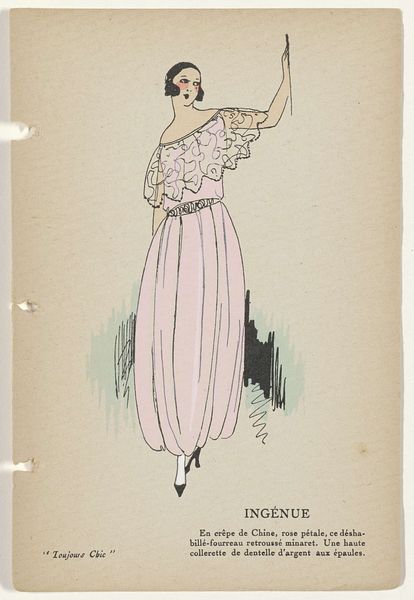
drawing, pen
#
portrait
#
art-deco
#
drawing
#
figuration
#
pen
Dimensions: height 180 mm, width 120 mm
Copyright: Rijks Museum: Open Domain
Curator: Look at this delightful pen drawing, "Toujours Chic Les Deshabillés, Hiver 1921-1922: Rose-noir," by G-P. Joumard, created between 1921 and 1922. It's currently housed right here at the Rijksmuseum. Editor: My first thought is… effortless cool! The high-waisted trousers and unstructured jacket feel so modern, yet there’s a definite nod to the visual language of Art Deco. It's sleek and chic. Curator: It's a beautiful example of how fashion illustrations functioned in their time. The image, as a sign, isn't simply communicating styles. It shows aspiration and a certain type of post-war, flapper-era femininity. What symbols are being reinforced through this drawing? Editor: Absolutely! You can't ignore the subtle power dynamics inherent in representations of women's fashion. Think about how visual presentation has, for centuries, played a role in dictating social standing and controlling expressions of gender. How “chic” could only apply to women from particular socio-economic conditions? The bobbed hair is part of that coded look, signaling independence, but also adherence to specific trends accessible only to the wealthy. Curator: That is true, but there is also a break from past conventions embedded here; perhaps less overtly controlling than in the past. The drawing depicts specific fabrics: a black Cresus satin for the pants, and a pink petal satin tunic over a lamé vest. These were not accessible fabrics to just everyone, but did express status through clothing—like the flappers' beaded dresses—marking a kind of new freedom that arose after the war. Editor: Yes, but it is an aesthetic freedom, isn’t it? Still bound by class and even race. While this image might present a specific ideal of modernity, it remains constrained. Whose modernity are we actually celebrating here, and what does the visual economy of fashion mean for women then and today? Curator: Indeed. This one little drawing has certainly opened up a trove of interconnected questions and answers. It is a striking visualization of what clothing meant in a world of changing cultural symbols. Editor: Absolutely, and seeing art as bound to social and historical forces helps us understand how the seemingly benign world of fashion has deep implications.
Comments
No comments
Be the first to comment and join the conversation on the ultimate creative platform.
